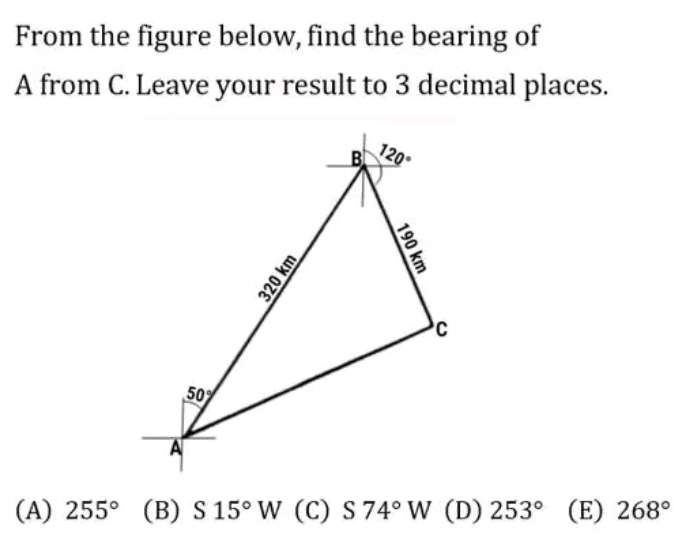
a = 180-120+50
a = 110°
a is angle ABC.
b² = 320²+190²-2*320*190cos110
b = 424.3697084246 km.
(424.3697084246/sin110) = (320/sinc)
c = 45.1198323317°
d = 360-60-c
d = 254.8801676683°
d ≈ 254.880°...
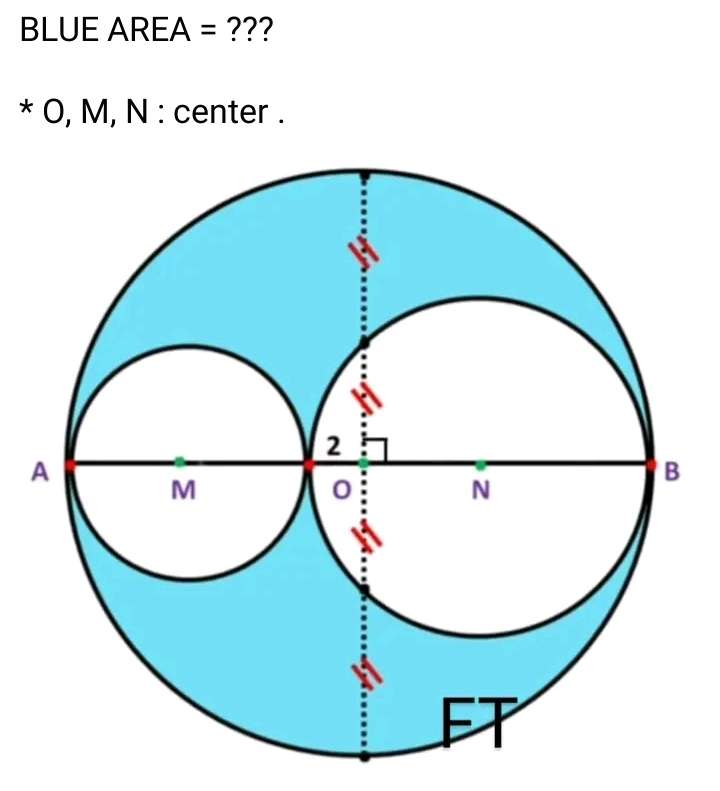
Let a be the area of the ascribed circle.
b = ½(a) units.
c = (a+2) units.
d = ½(c)
d = ½(a+2) units.
d is the radius of the big inscribed circle.
e = (a-2) units.
f = ½(e)
f = ½(a-2) units.
f...
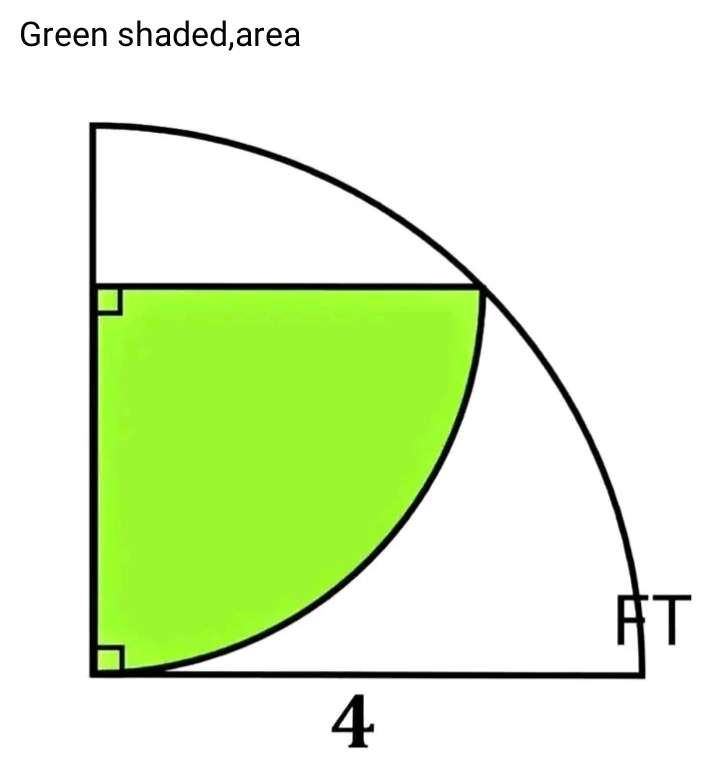
Calculating area green inscribed quarter circle.
Let it's radius be a.
It implies;
2a² = 4²
a² = 8
a = 2√(2) units.
Therefore, area green inscribed quarter circle is;
¼*π*a²
= ¼*π*2√(2)*2√(2)
=...
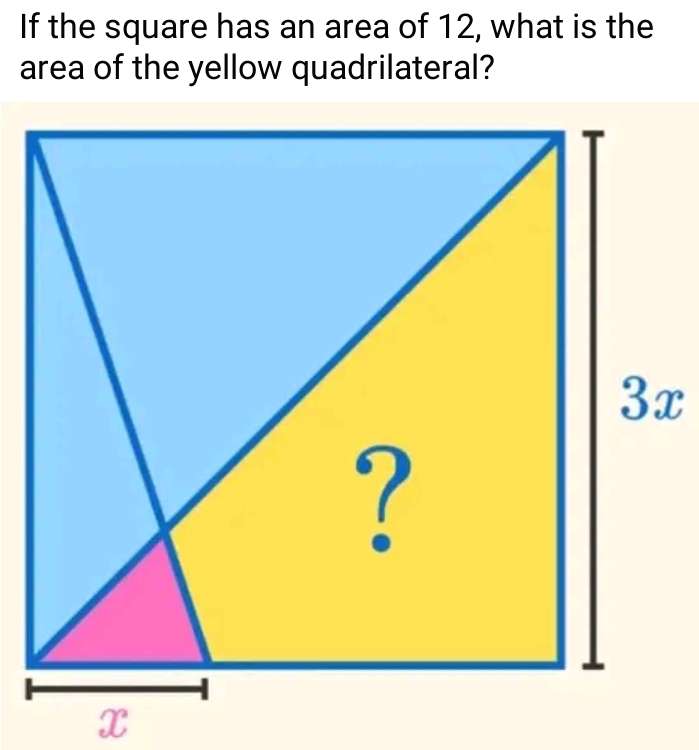
It implies;
Calculating x.
(½*x*3x)+(½(2x+3x)*3x) = 12
3x²+15x² = 24
18x² = 24
x² = 4/3
x = ⅓(2√(3)) units.
Therefore, 3x, the side length of the ascribed square
is;
3*⅓(2√(3))
= 2√(3) units ...
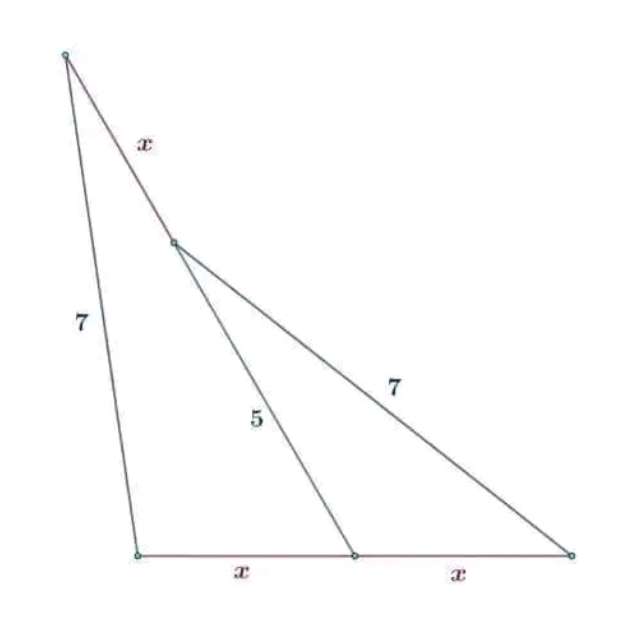
Calculating x.
7² = x²+5²+2*5*xcosa
49 = x²+25+10xcosa
24 = x²+10xcosa
10xcosa = 24-x²
cosa = (24-x²)/(10x) --- (1).
b = (x+5) units.
7² = x²+(x+5)²-2x(x+5)cosa
49 = x²+x²+10x+25-(2x²+10x)cosa
2...
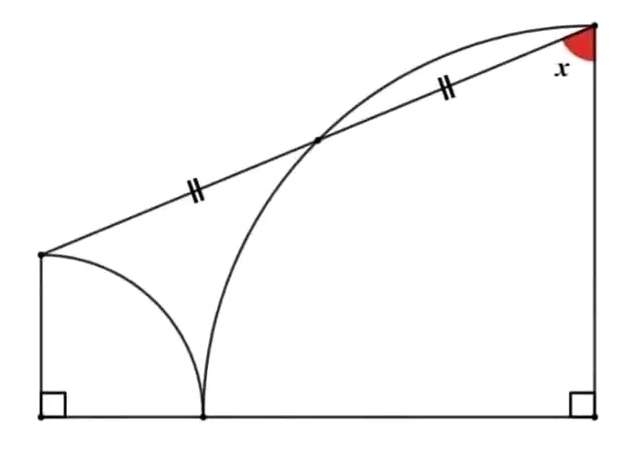
The required angle, x is;
a = ½(90)
a = 45°
it implies;
x = ½(180-a)
x = ½(180-45)
x = ½(135)
x = 67.5°
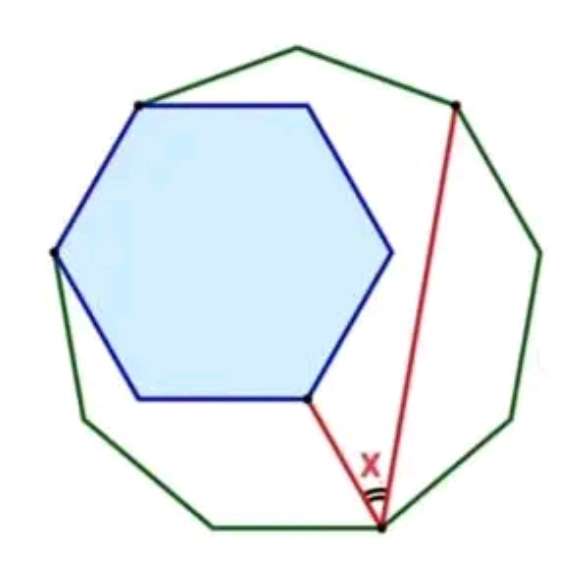
Notice!
The ascribed polygon is a regular nonagon.
The inscribed polygon is a regular hexagon.
Calculating the required angle, x.
a = ⅙*180(6-2)
a = 120°
a is the single interior angle of the re...
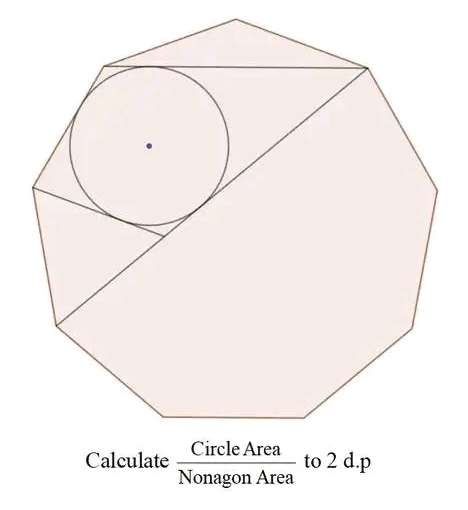
Sir Mike Ambrose is the author of the question.
Let the side of the regular nonagon be 1 unit.
Therefore;
Area nonagon is;
½(9)*(1/(2tan(180/9)))
= ¼(9)*(1/tan(20))
= 6.18182419377 square units....
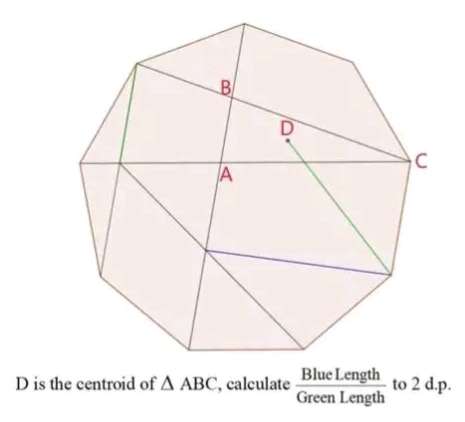
Sir Mike Ambrose is the author of the question.
Let the side of the regular nonagon be 1 unit.
Therefore;
Length Green is;
((1+2sin50)sin20/sin80) + √(1.08506357513²+1²)
= 0.87938524157 + 1.4755...
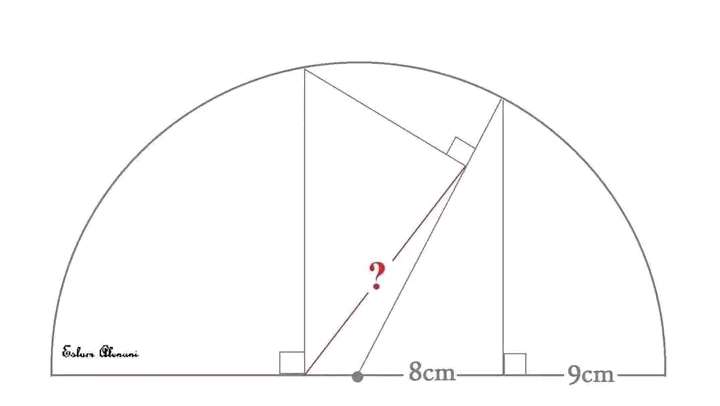
a = 8+9
a = 17 units.
a is the radius of the half circle.
b²+8² = 17²
b = √(225)
b = 15 units.
c²+d² = 17²
c = √(289-d²) units.
e = (17-d) units.
f = ½(c)
f = ½√(289-d²) unit.
g = 17+17-9
g = 3...